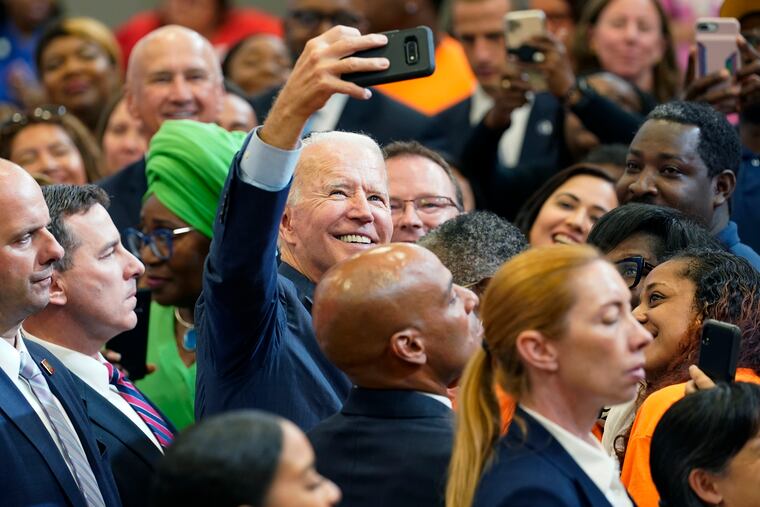TikTok stars shouldn’t hawk vaccines | Opinion
It’s good news that the White House sees the urgency of persuading people to get vaccinated and sees potential in targeted social messaging. But social media influencers aren’t the right spokespeople.

The delta variant has been a dreadful blow in the fight against COVID-19. But given the high percentage of people who have declined to be vaccinated, it was also all but inevitable. Vaccine hesitancy is a scourge that may prove more deadly than the delta variant itself by preventing herd immunity and allowing for the growth of yet more pernicious strains of COVID-19. Unless we can generate a major uptick in vaccination rates, it’s hard to see the end of this tunnel.
So, it was welcome news when the Biden administration announced recently it is dedicating resources to persuading the unsure or fearful that getting vaccinated is not only effective but safe. Specifically, the White House is recruiting an army of TikTok stars and other so-called “influencers” by offering them incentives to discuss their own belief in and comfort with vaccination.
Sounds great. Social influencers can reach tens of thousands of eyeballs, with massive audiences. If substantive information happened to spread in the way viruses do, it would work like a charm. All you would need is a popular person to expose lots of people to an idea, and it would foster not only an exponential flow of that idea through social networks but a flow that caused a real shift in thinking.
The trouble is the kind of influence the White House seeks to exert doesn’t spread that way. Persuading the anxious to get vaccinated is not the same as suggesting that they buy coconut water or try a new brand of shampoo.
Influence and persuasion are not the same things. When making decisions that affect our lives, we don’t look to Kim Kardashian as a role model. We look at the choices made by the people around us, those whose approval and acceptance we value, and those whose lives seem equivalent to our own in economic, social, and ideological ways.
» READ MORE: I was a COVID-19 vaccine skeptic. Now I want you to get your shot. | Opinion
Fighting vaccine hesitancy requires persuading people of an idea that runs counter to their belief systems and intuition. It’s weighty stuff, and that kind of influence spreads across social networks in an entirely different way from things like product placement or gossip. As I’ve written previously, shifts in thinking start at the periphery of a social network and move slowly inward.
My colleague and I at the Annenberg School of Communication have uncovered an algorithm that pinpoints small social clusters in these marginal regions that have enormous social influence. We found that it isn’t the centrally located, most “popular” people in a network — those with the most connections — who are the ones whose help we should seek. Instead, there are people who occupy key locations in the network, in places we’ve dubbed “network hotspots.” It’s an exciting discovery, with applications ranging from accelerating social activism to boosting public health.
Here are five scientific principles to guide this strategy:
Social change does not spread the way a virus does. The number of eyeballs reached in an awareness campaign is not a measure of actual spreading. In fact, if an idea reaches a huge audience but no one adopts it, the stigma can doom the innovation.
Messages that face entrenched opposition from established norms will spread more effectively if the early adopters have less exposure to the entire network, rather than more. When it comes to spreading a new norm, nonadopters are countervailing influences. To succeed, a new idea must be what we call “redundantly” reinforced in one area of the network, so it gathers credibility without the countervailing influence of too much skepticism too soon, which can overwhelm and quell a fledgling initiative.
Enable your spokespersons to work together. The failure mode of “influencers” is to have them all speak out directly to their followers in a “top-down” fashion. But a more effective strategy is “bottom-up,” by targeting change agents who can talk to each other so that other people can observe the conversations among the spokespersons and experience the social validation and social currency of the new norm.
If you want people to find an innovation relevant to their lives, and therefore be willing to change their behavior to adopt it, they must perceive similarity with the early adopters. Again, we look to the people we recognize as similar in life circumstances as models of how to behave, watching the outcomes of their choices to inform our own.
Asking social influencers to spread a message is based on the premise that top-down influence from “social elites” will be more effective than peer persuasion from trusted friends and neighbors. But the result of such messaging may be that friends and neighbors bond in opposition to the “elites.” The trick is to foster aspiration, not resentment.
» READ MORE: A Philly pediatrician on parents’ top fears on the COVID-19 vaccine | Expert Opinion
It is good news that the White House recognizes the urgency of persuading people to get vaccinated, and further, that it sees the potential in targeted social messaging. Now, the Biden administration must shift its focus to the people who can actually get the job done — the seemingly marginal people whom our algorithm identifies as primed to be the most persuasive agents of change. Find those people and recruit them to discuss and post about the ease of their own vaccination and its lack of ill effect. Given what’s at stake, and the dynamics of social change, it’s simply the best strategy we have.
Damon Centola is a senior fellow at the Leonard Davis Institute of Health Economics and professor of communication, sociology, and engineering at the University of Pennsylvania, and is the director of the Network Dynamics Group.